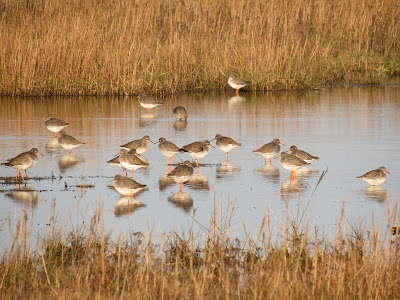 |
| Seagrass (pictured) and saltmarsh are precious to the welfare of the planet |
HALF a million oysters are to be introduced to the Humber Estuary - not as an aphrodisiac food source or to make pearls but as part of a 'biodiversity' project.
It is hoped the activities of the creatures will filter and improve water quality and create 'biogenic reefs' - accumulations of living creatures.
Some 95 per cent of native oyster reefs have disappeared from the Humber since the early 1900s.
The intiative is a partnership between Danish offshore energy giant Ørsted, which has an important hub in Grimsby, the Lincolnshire Wildlife Trust and the Yorkshire Wildlife Trust.
As part of the same £2.5-million scheme, Ørsted will plant three hectares of saltmarsh and four hectares of seagrass.
The proposal has been welcomed by UK Environment Minister Rebecca Pow (pictured) who says:
"We are committed to developing schemes that work alongside the recovery of natural habitats.
"Climate change and biodiversity loss are significant challenges, and I welcome the commitment Ørsted is making."
The Humber Estuary’s conservation status has recently been downgraded due to pollution and loss of habitat.
Although, the Cleethorpes saltmarsh has extended in recent years, it is rapidly declining elsewhere as a result of rising sea levels and land development across the UK encroaching on coastal areas.
It is hoped that 'rewilding' and reintroducing native species will help restore the estuary and play a vital role in addressing climate change.
In a similar way to trees absorbing carbon from the air, seagrass absorbs carbon from water - and does so at a rate 35 times faster than tropical rainforests.
Saltmarsh is also incredibly efficient at capturing and storing large quantities of carbon and provides feeding and breeding habitat for wading birds such as curlew, redshank and snipe.
 |
| Redshank feeding on Cleethorpes saltmarsh |
Nature-based solutions can play an important role in adaptation to climate change and addressing issues such as flood risks.
Paul Learoyd, Chief Executive for Lincolnshire Wildlife Trust, comments: "After spending time over recent years working with partners across the Humber to identify priorities for the estuary and its hinterlands, we ares extremely pleased to take forward this work with Ørsted and Yorkshire Wildlife Trust.
"The lessons from this work could see large-scale restoration across our North Sea, and beyond."
Closer to home, Ørsted is also working alongside World Wildlife Fund Denmark to improve the conditions for cod and other marine organisms in the Kattegat strait between Denmark and Sweden.
It is also attempting to growing corals on offshore wind turbine foundations in Taiwan.

No comments:
Post a Comment